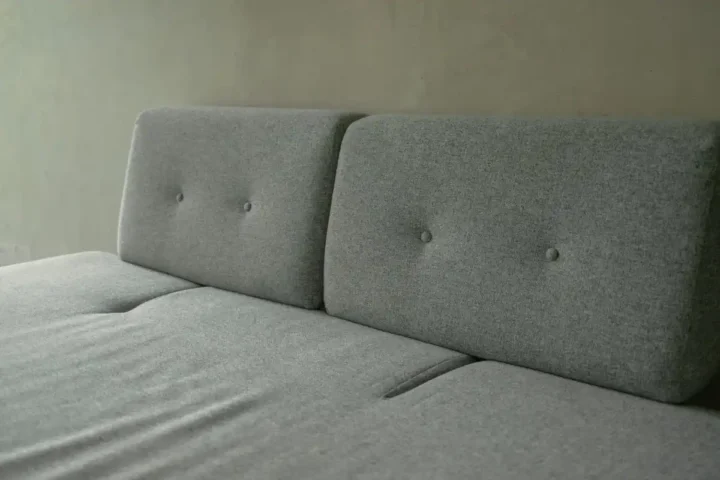Scaling a Custom Furniture Business Without Losing Quality Control
Scaling a custom furniture business seems like a dream come true – more orders, increased revenue, larger shop. Unfortunately, what no one tells the novice furniture maker is that scaling is when most issues with quality begin.
Small operations have hands-on access to all pieces and can ensure that one or two craftsmen know every detail regarding input. They can address concerns immediately and make on-site adjustments. As more employees come into play and larger projects emerge, this transition becomes impossible. Quality declines, customer complaints increase, and the reputation established over years falls flat in a matter of months.

Where Quality Falls Apart
In most furniture businesses, the first quality crisis emerges when an owner hires their third or fourth employee. The owner can no longer oversee every cut, every joint, every finish required.
New employees do not automatically possess the same level of quality as the founder. They may possess great skills but also different habits, methods learned from previous employment, or just an incomplete understanding of the importance of certain steps and why. If one person does the joinery differently, it may not seem awful to the customer; however, if they always apply the same joinery style, they emerge from a new piece with no connection to the initial concept.
It’s also less likely that small amounts of quality material will emerge. A few boards here and there are good enough for refinishing or reupholstery; however, once large orders emerge for fabrics or boards, it’s less likely that a bad batch will be caught.
The means by which companies establish standards that stick are ones that allow them to continue scaling.
Written procedures might be boring, but they’re what allows companies to succeed
Standards do not need to be overwhelming manuals. They can merely be checklists at each step of production (when no one reads the 100-page guide). What joinery options are acceptable? What finish texture works? How should pieces be stored? Document it once for new employees (and newcomers) to reference instead of guessing.
Photo documentation is even better. Document proper finished edges versus edges that require rework. It’s easier to show a standard than describe it.
Sourcing Quality Materials at Scale
When your source quantities increase, establishing relationships with reputable suppliers matters. When you cycle through vendors to get the cheapest option for one project, quality varies.
For necessary items like upholstery foam, it’s essential to provide specifications before getting started on the project and not after. Different density ratings and firmness levels may look similar as sheets but do very different things. When fabrics and wood do much of the talking for furniture pieces, having clear specs ensures that each piece is expected to be comfortable and durable enough, regardless of who on staff handles the upholstery work.
Storing options matter as well. Purchasing in bulk means cost savings; however, it also requires storage for safety. Wood needs controlled climates, fabrics need to be away from dirt and sunlight, foam needs dry locations and cold temperatures for safety.
Training Without Loss of Craft
Hiring craftspeople with talent does not automatically guarantee their ability to perform at one particular company’s standards. Everyone learns slightly different methods of application.
An onboarding process makes all the difference. New hires should shadow seasoned staff on actual projects – not just watching demos – and get hands-on training without micro-management so that they receive feedback on not just how it’s done but why. New employees should understand the importance of each piece step as they may presume it’s merely another project.
Cross-training is also key. If multiple staff members can manage different phases of development, quality is not contingent on just one person performing; additionally, team members who understand different phases can catch potential setbacks along the way.
Quality Checkpoints that Work
Inspecting finished products at the end of development is too late; quality control must happen along the way as production is being developed.
Stage gates work well – a semi-quick quality assessment at rough assembly, post-assembly, before finishing – and final assembly do not take too much time from a project but should confirm that each step meets standard quality before moving on to something else that may require more time to fix.
Someone other than the person who crafted should do these inspections. It’s too easy for crafters to overlook their issues; thus a fresh set of eyes can help nip concerns in the bud before they become much bigger problems elsewhere.
Customer Management
The larger scaling occurs, the higher the lead times – being upfront with customers regarding timelines and limitations on custom requests reduces bad reviews.
Some companies attempt to preserve the same custom options they did when they’re small; this is a surefire way to sink an operation. It’s better to become clear about what’s stock and what’s tolerable custom versus truly custom (and therefore priced as such).
Communication systems become paramount; when the owner was small and personally managed every step and customer detail inquiry, nothing fell apart. With staff communication mixed in, a system to track notes regarding productions and intended due dates goes a long way in preventing confusion.
Finding The Right Size
What no one will tell you in business advice is that sometimes it’s better not to scale.
If it’s going to cost you so many systems to retain quality that you’re less profitable or working yourself out of the craft (or into management overload), it’s probably not meant to be. Some furniture shops thrive at 5-8 people but fail when scaling exceeds that number.
The goal is not to create the largest furniture shop in the world; it’s to create one that will thrive profitably with product everyone on staff can boast.


